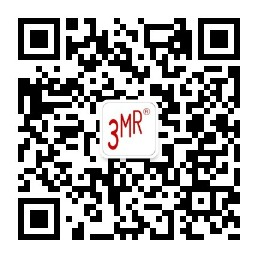What types of non-woven fabrics are there? There are also many types of non-woven fabrics. The exact name of non-woven fabrics should be non-woven fabrics, or non-woven fabrics. Because it is a fabric that does not need to be spun and weaves, it just aligns or randomly arranges short textile fibers or filaments to form a web structure, which is then reinforced by mechanical, thermal bonding or chemical methods. Non-woven fabric breaks through the traditional textile principle, and has the characteristics of short process flow, fast production speed, high output, low cost, wide use, and multiple sources of raw materials.
1. Spunlace non-woven fabric
The spunlace process is to spray a high-pressure fine water stream onto one or more layers of fiber webs, so that the fibers are entangled with each other, so that the fiber webs can be reinforced and have a certain strength.
The process of spunlace non-woven fabrics is similar to other dry-laid non-woven fabrics. It requires raw material preparation, opening and mixing, carding into a net (or air-laid or cross-folded into a net), spunlace reinforcement, and finishing. Drying, coiling, finished product slitting inspection and packaging and storage. Spunlace cloth can be formed by dry method, wet method, or even melt spinning method.
Common spunlace process: fiber measurement---opening and mixing---carding into a web---spunlace entanglement on the front and back of the fiber web (requires strict water treatment)---drying---coiling .
The principle of spunlace non-woven fabric: the fiber web is conveyed by a conveyor screen or a metal screen, and is pre-wet and pre-spunlaced by a pre-wetting device (roller or water curtain), and then enters the spunlace area, where the fiber web is subjected to the spunlace area. The very fine high-pressure water jets emitted by several spunlace devices cause the surface fibers to enter the fiber web vertically due to strong impact. It is reflected back at different angles to form a reverse impact on the fiber, which causes the fiber to shift in different directions, so that the fibers in the fiber web are entangled and tightly hugged together to form a wet non-woven fabric with a certain strength. The water flow after the secondary reflection is taken away by the spunlace device and the vacuum suction box under the net curtain due to the energy reduction It becomes cloth after drying.
Spunlace cloth is formed by entanglement of fibers laid by high-pressure water jet spraying.
After the fiber passes through the carding machine, it is combed and flattened, and then laid on the conveying line by the web-laying machine, and finally formed by entanglement of the fibers by high-pressure water jet spraying. After forming, it is finally rolled into a spunlace roll through a high-temperature dryer.
Spunlace non-woven fabrics are classified according to different patterns, such as plain weave and cross-printing. The general raw materials are VISCOSE viscose and POLYESTER polyester, and the content of each component is different.
2. Heat-sealing non-woven fabric
Thermal bonding non-woven fabric refers to adding fibrous or powdery hot-melt bonding reinforcement material to the fiber web, and then the fiber web is heated, melted and cooled to be consolidated into a cloth.
3. Pulp air-laid non-woven fabric
Airlaid non-woven fabrics can also be called dust-free paper and dry-laid non-woven fabrics. It uses air-laid technology to open the wood pulp fiberboard into a single fiber state, and then uses air-flow method to agglomerate the fibers on the web curtain, and then reinforce the fiber web into a cloth.
Four, wet-laid non-woven fabric
The wet-laid non-woven fabric is to open the fiber raw materials placed in the water medium into single fibers, and at the same time, the different fiber raw materials are mixed to form a fiber suspension slurry. The suspension slurry is transported to the web forming mechanism, and the fibers are formed into a web in a wet state. Reinforce into cloth.
Five, spunbond non-woven fabric
Spunbond non-woven fabrics are formed after the polymer has been extruded and stretched to form continuous filaments. The filaments are laid into a web, and the web is then bonded through self-bonding, thermal bonding, chemical bonding or mechanical reinforcement. The web becomes a non-woven fabric.
Six, melt blown non-woven fabric
The process of meltblown non-woven fabric: polymer feeding --- melt extrusion --- fiber formation --- fiber cooling --- forming a net --- strengthening into cloth.
Seven, needle punched non-woven fabric
Needle-punched non-woven fabrics are a kind of dry-laid non-woven fabrics. Needle-punched non-woven fabrics use the puncture effect of needles to reinforce the fluffy web into a cloth.
8. Stitched non-woven fabric
Stitched non-woven fabric is a kind of dry-laid non-woven fabric. The stitching method uses the warp-knitted loop structure to align fiber webs, yarn layers, non-woven materials (such as plastic sheets, plastic thin metal foils, etc.) or a combination of them. The body is reinforced to make a non-woven fabric.







